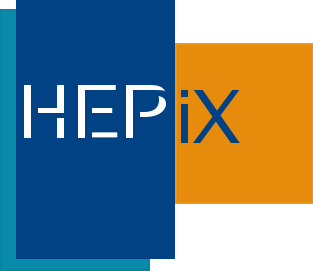Carlos Fernando Gamboa
(Brookhaven National Laboratory (US))
15/10/2015, 14:00
Basic IT Services
Within the High Energy Physics (HEP) software infrastructure a diverse Data storage and Distribution software technologies are used. Despite their heterogeneity they all provide a capability to trace application event data to be able to troubleshoot problems related to the software stack or software usage. The subsequent data is written once and stored in the majority of cases in a file,...
Cary Whitney
(LBNL)
15/10/2015, 14:20
Basic IT Services
The ELK (Elastic, Logstash, Kibana) stack has been chosen to be one of the key component for our new centerwide monitoring project. I'll discuss our overall philosophy on monitoring and how ELK fits in. The current structure and how it is performing.
Define centerwide: Everything in the data centers. All hosts, filesystems, most applications, power, cooling, water flow, temperature,...
Miguel Coelho dos Santos
(CERN)
15/10/2015, 14:40
Basic IT Services
This presentation will provide an update of the activities concerning IT Monitoring. This includes the monitoring of data centre infrastructure, hardware monitoring, host monitoring and application monitoring; as well as the tools being used or tested.
Alberto Rodriguez Peon
(Universidad de Oviedo (ES))
15/10/2015, 15:00
Basic IT Services
An update on CERN’s Configuration Service will be presented. This presentation will review the current status of the infrastructure and describe some of the ongoing work and future plans, with a particular focus on automation and continuous integration. Recent effort to scale and accommodate a higher number of puppet clients will also be mentioned.
Bonnie King
(Fermilab)
15/10/2015, 15:50
Basic IT Services
Fermilab has moved from the era of two large multi-decade experiments to hosting several smaller experiments with a shorter lifecycle. Improvements in micrcontroller performance have moved computers closer to the experiment Data Acquisition systems where custom electronics have previously been used. There are also efforts to standardize DAQ software into reuseable products in alignment with...
James Adams
(STFC RAL)
15/10/2015, 16:10
Basic IT Services
An update of developments and activities in the Quattor community over the last six months.
Mizuki Karasawa
(BNL)
16/10/2015, 11:10
Basic IT Services
In a rapidly growing facility as NSLS-II, we use foreman as an automation tool that integrates to DNS, DHCP, TFTP, Puppet which makes installation & provisioning processes much easier and help to bring the service/server components online in a short timely manner. For those who use Puppet Enterprise as an paid version ENC, Foreman can also substitute of that. This talk will present the detail...
Mizuki Karasawa
(BNL)
16/10/2015, 11:30
Basic IT Services
Gitlab - a MIT licensed open source tool, that cooperates a set of rich features managing Git repositories, code reviews, issue tracking, activity feeds and wikis. The most powerful feature - CI for continuous integration makes the code developing much more efficient and cost saving, it's also a great tool to enhance the communication and collaboration. In NSLS-II, we have a great number of...
Dmitry Nilsen
16/10/2015, 11:50
Basic IT Services
Host deployment and configuration technologies at SCC.
The Steinbuch Centre for Computing(SCC) at Karlsruhe Institute Of Technology (KIT) serves a number of projects, including the WLCG Tier-1 GridKa, the Large Scale Data Facility (LSDF), and the Smart Data Innovation Lab (SDIL) using bare metal and virtual compute resources and provides a variety of storage and computing services to the...
Andrew David Lahiff
(STFC - Rutherford Appleton Lab. (GB))
16/10/2015, 12:10
Basic IT Services
At RAL we have been considering InfluxDB and Grafana as a possible replacement for Ganglia, in particular for application-specific metrics. Here we present our experiences with setting up monitoring for services such as Ceph, FTS3 and HTCondor, and discuss the advantages and disadvantages of InfluxDB and Grafana over Ganglia.
